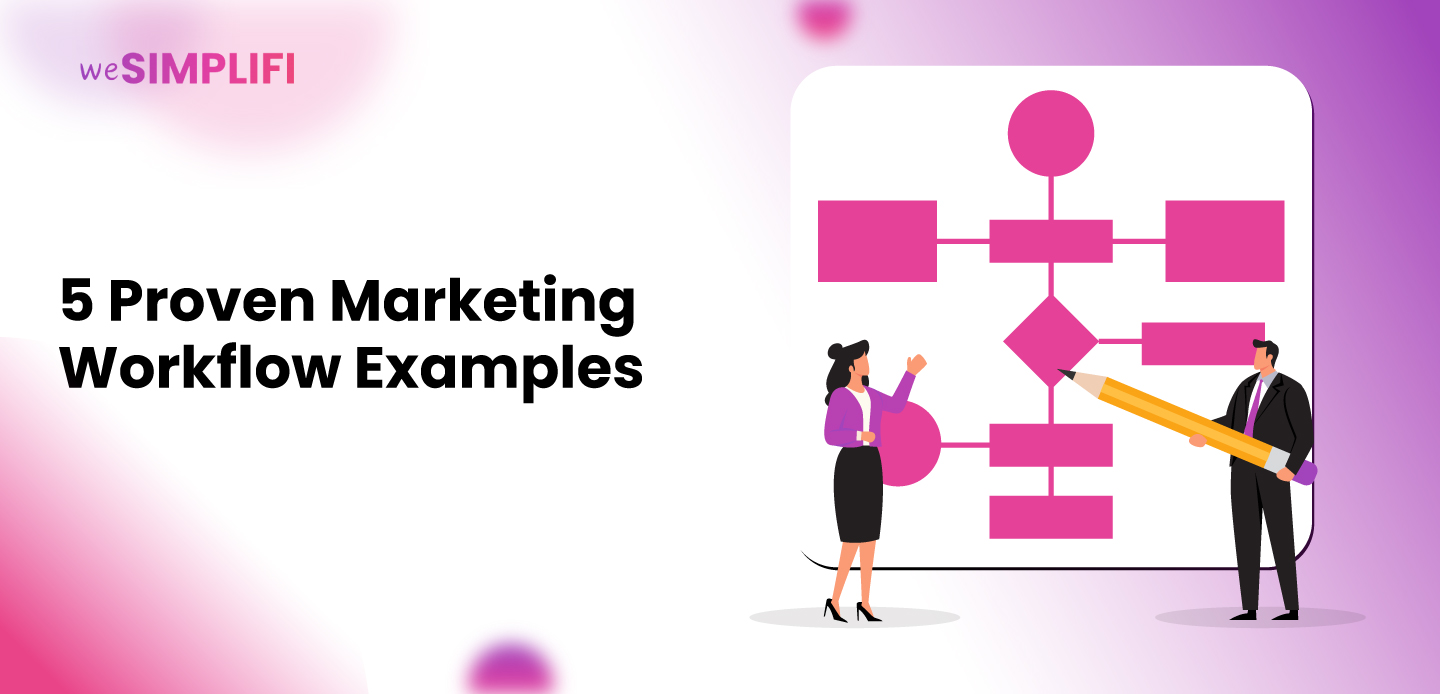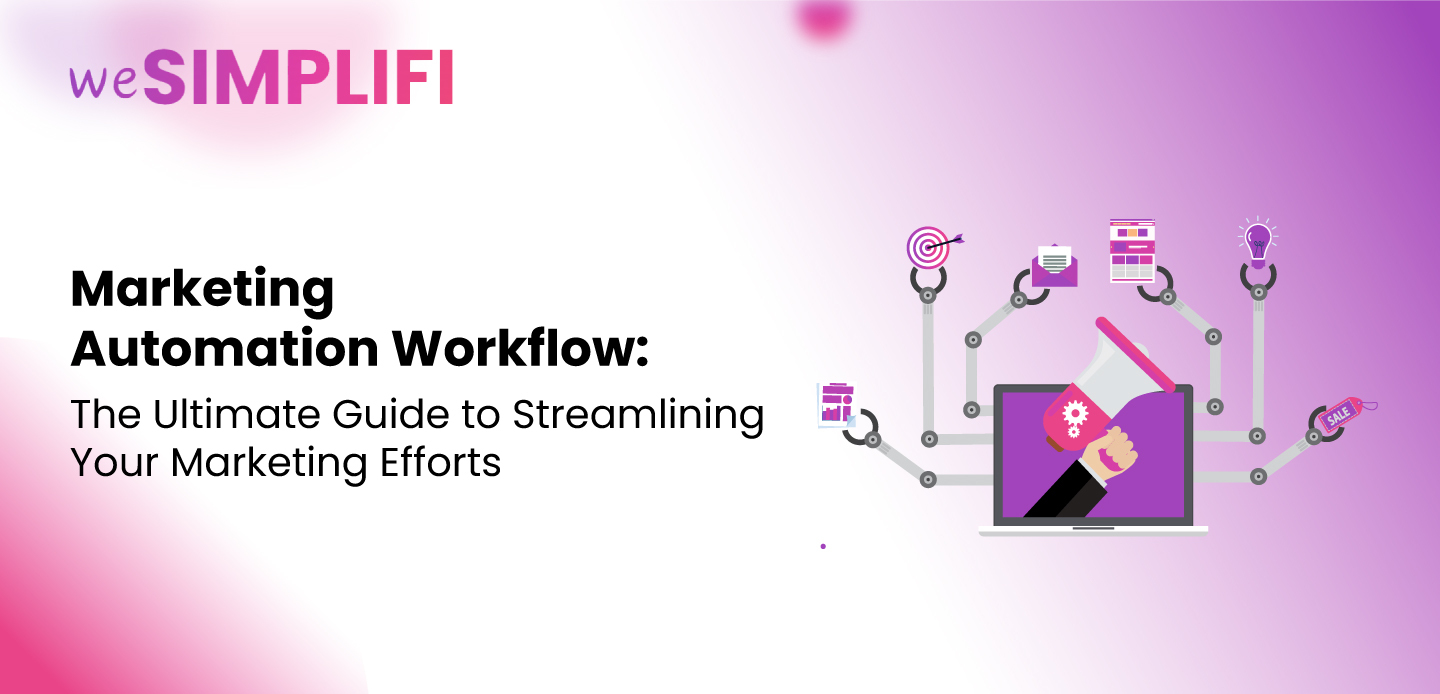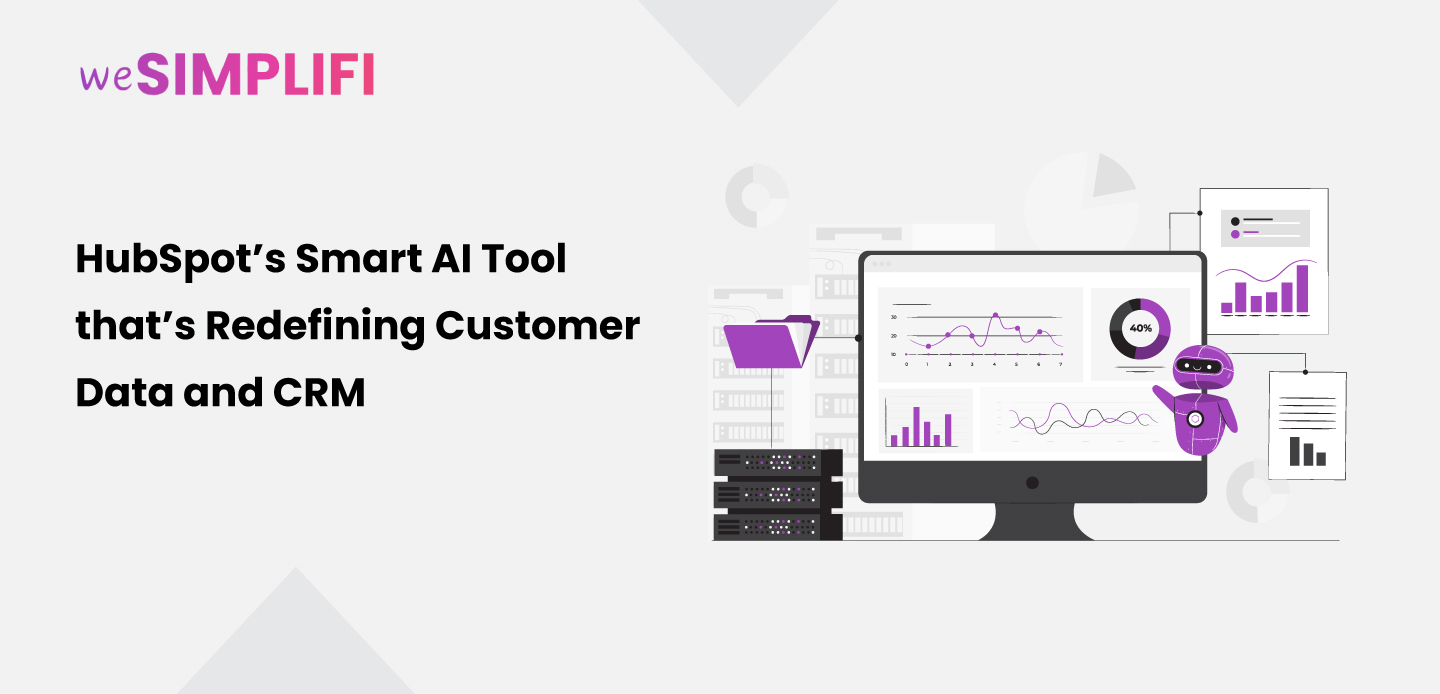5 Proven Marketing Workflow Examples

Introduction
The importance of marketing workflow management cannot be overemphasized in this age of fast moving global digital world to simplify things and deliver better results. Whether it be email campaigns or lead nurturing, automated workflows can eliminate repetitive tasks, unify messaging and lead to conversions. As organizations battle for audience syndicate marketing execution needs to be more efficient and with the right precision than ever. Marketing workflows help teams eliminate bottlenecks, enhance collaboration, and maintain brand consistency across multiple channels. By automating repetitive tasks such as social media posting, customer segmentation, and follow-up sequences businesses can focus on strategy and creativity while ensuring no lead falls through the cracks. In this guide, you'll explore marketing workflows in depth and see how the right tools and strategies can turn everyday tasks into impactful, scalable systems. We’ll cover key concepts, best practices, and real-world examples to help you design workflows that save time, boost engagement, and maximize ROI. Whether you're building your first marketing automation plan or refining your current system, these actionable insights will help you optimize your workflow marketing for better performance and long-term success.What Is a Marketing Automation Workflow?
A marketing automation workflow is a structured series of actions triggered by specific behaviors or data points, designed to move leads and customers through your funnel automatically. These workflows eliminate repetitive manual tasks while ensuring timely, personalized interactions that nurture prospects and drive conversions.  Key components of a marketing automation workflow include:
Key components of a marketing automation workflow include:
Triggers – Actions or conditions that initiate the workflow (e.g., a form submission, website visit, or purchase).
Actions – Automated responses such as emails, CRM updates, or internal notifications.
Conditions – Rules that determine the next steps based on user behavior (e.g., segmenting leads by engagement level).
Goals – The desired outcome, such as a sale, demo request, or re-engagement.
Common Workflow Examples
Lead Nurturing Sequence
Trigger: A user downloads an ebook.
Actions : Send a thank-you email with related resources. Add the lead to a drip campaign with educational content.
Notify the sales team if the lead meets qualification criteria (e.g., visits pricing page).
Abandoned Cart Recovery
Trigger : A customer leaves items in their cart.
Actions: Send a reminder email within an hour. Follow up with a discount offer after 24 hours. Retarget via social media ads if no purchase is made.
Customer Onboarding Series
Trigger: A new user signs up for a free trial.
Actions: Deliver a welcome email with setup instructions. Schedule educational emails over 7 days. Prompt a check-in call from support if engagement drops.
Why Automation Workflows Matter
Scalability – Handle thousands of leads without manual effort.
Personalization – Deliver tailored content based on user behavior.
Efficiency – Reduce human error and free up time for strategic tasks.
Data-Driven Optimization – Track performance and refine workflows for better conversion rates. By implementing well-designed automation workflows, businesses can enhance customer journeys, improve sales alignment, and maximize marketing ROI all while delivering a seamless, responsive experience.
Why Are Marketing Workflows Important?
- Save Time: Automate routine marketing and sales processes.
- Ensure Consistency: Standardize your marketing campaign workflow across platforms.
- Personalize at Scale: Adjust content based on user behavior and preferences.
- Enhance Lead Nurturing: Seamlessly move prospects through the sales and marketing workflow.
- Boost Conversions: Use timely, automated messages to increase engagement and ROI.
Key Components of a Successful Marketing Workflow
- Triggers: Actions that start the workflow (e.g., form submission, email open).
- Conditions: Branching logic that defines the next step (e.g., did they click?).
- Actions: The automation—sending emails, updating fields, assigning tasks.
- Goals: The end result, like a purchase, booking, or download.
14 Powerful Marketing Workflow Examples to Try
1. Lead Capture Workflow
Triggered by:
Form submission Tools> HubSpot, ActiveCampaign Keywords> marketing workflow tools , marketing workflow software
💡 Best for: Capturing leads efficiently and starting nurture paths. These types of nurture flows are often seen in SaaS workflow automation strategies. 
2. Lead Nurturing Workflow
Triggered by: Content engagement
💡 Best for: Guiding leads with relevant content throughout their journey. 
3. New Contact Welcome Workflow
Triggered by: New subscriber/contact
💡 Best for: Making a strong first impression. 
4. Content Download Workflow
Triggered by: Resource download
💡 Best for: Building trust and providing more value. 
5. Abandoned Cart Workflow
Triggered by: Shopping cart abandonment
💡 Best for: Recovering lost sales. 
6. Re-engagement Workflow
Triggered by: Contact inactivity
💡 Best for: Reviving dormant leads. 
7. Event Registration Workflow
Triggered by: Event sign-up
💡 Best for: Driving attendance and follow-ups. 
8. Webinar Follow-Up Workflow
Triggered by: Attendee or non-attendee
💡 Best for: Nurturing post-event leads. 
9. Customer Feedback Workflow
Triggered by: Completed purchase
💡 Best for: Collecting reviews and improving satisfaction. 
10. Cross-Sell/Up-Sell Workflow
Triggered by: Past purchases
💡 Best for: Increasing customer lifetime value. 
11. Customer Renewal Workflow
Triggered by: Subscription end date
💡 Best for: Preventing churn and increasing retention. 
12. Birthday or Anniversary Workflow
Triggered by: Date field
💡 Best for: Creating emotional connections and loyalty. 
13. Email Engagement Workflow
Triggered by: Low open/click rates
💡 Best for: Optimizing email lists and content delivery. 
14. Free Trial Onboarding Workflow
Triggered by: Free trial signup Keywords: automated workflow examples
💡 Best for: Increasing product adoption and upgrades. 
Best Practices for Effective Workflow Marketing
- Keep it simple and focused on a clear goal.
- Regularly audit and refine based on performance.
- Use segmentation for better targeting.
- Choose scalable marketing workflow tools (like HubSpot or ActiveCampaign).
- Track metrics to continuously improve.
Popular Marketing Workflow Software and Tools
- HubSpot – All-in-one CRM with powerful workflow automation
- ActiveCampaign – Best for behavior-based automation
- Mailchimp – Easy to use for small teams
- Marketo – Enterprise-level marketing automation
FAQ's
Q. What is a marketing automation workflow?
A marketing automation workflow is a sequence of automated actions triggered by a user’s behavior or specific conditions. These help marketers deliver personalized content, nurture leads, and automate repetitive tasks for greater efficiency and effectiveness.Q. What is the workflow of conversion in marketing?
The workflow of conversion in marketing refers to the series of steps a prospect takes to become a customer, often managed through automation. This includes touchpoints like content downloads, email sequences, lead scoring, and sales handoffs—automated to optimize timing and messaging.Q. What is a marketing workflow?
A marketing workflow is a structured series of steps or actions that help automate and manage marketing processes efficiently. It outlines how specific tasks—like sending emails, segmenting contacts, assigning leads to sales, or publishing content—are triggered and completed in response to a user’s behavior or a preset schedule.Key Components of a Marketing Workflow:
- Triggers – Events that initiate the workflow (e.g., form submission, email opened).
- Conditions – Logic that defines different paths based on user behavior (e.g., did the user click a link?).
- Actions – Automated tasks such as sending emails, updating CRM records, or scheduling follow-ups.
- Goals – The end objective, like nurturing a lead, converting a prospect, or retaining a customer.
Ready to Supercharge Your Marketing Workflow Management?
At Wesimplifi, we help teams implement powerful marketing workflow software and automation strategies through HubSpot. From lead capture to upselling, we create smart, scalable systems tailored to your business.
Start building your automated workflows today - contact us here


-1.jpg)